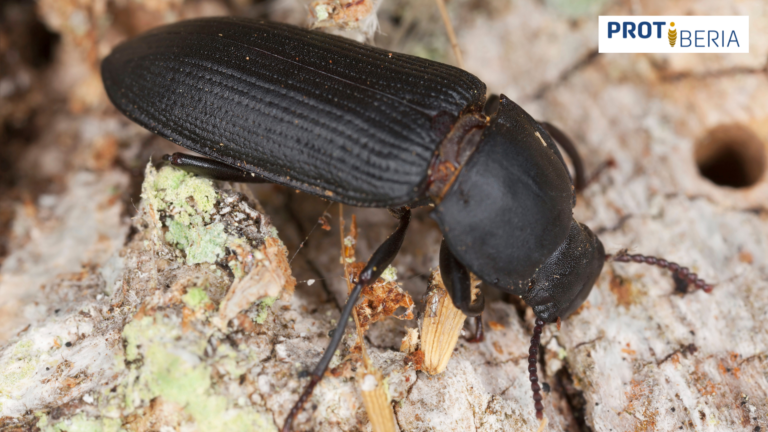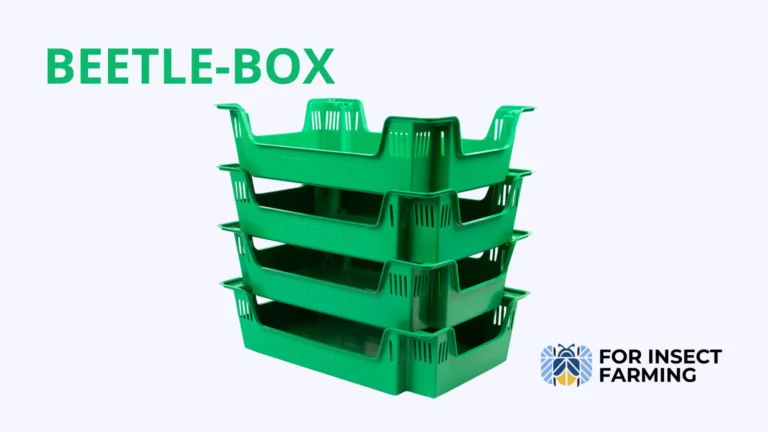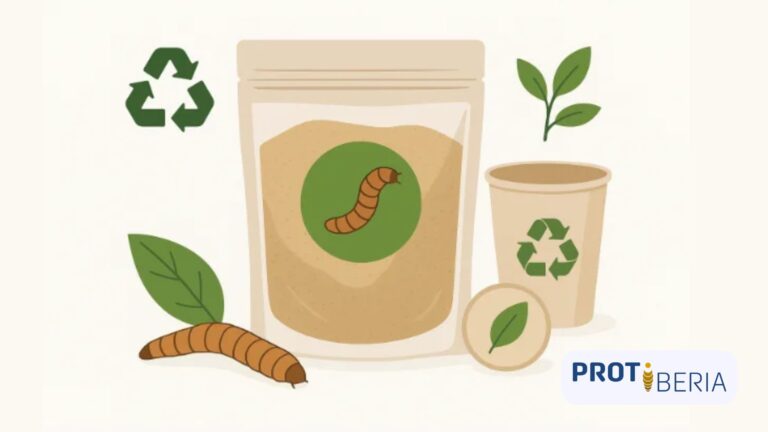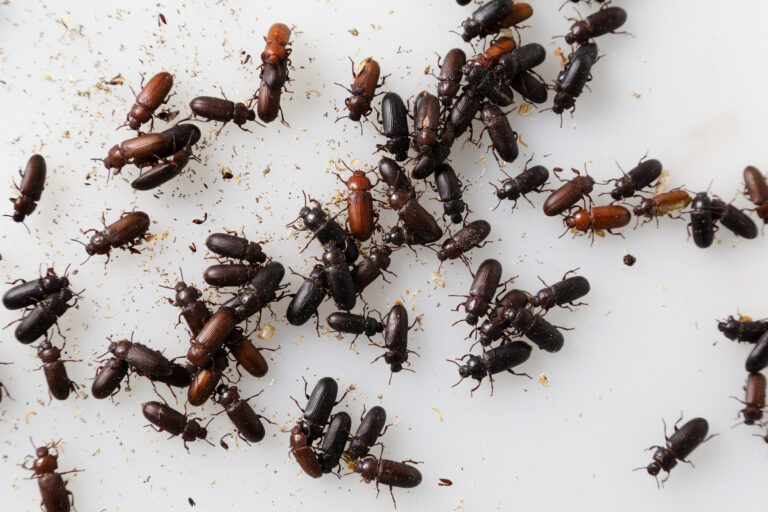| Chitin and its derivatives are an excellent material with unlimited application possibilities due to their multiple properties. Currently, chitin comes from sources that present problems, such as supply shortages, seasonal availability and environmental pollution. In this sense, insects could be an option to solve these problems while producing a high-quality protein. |
Tenebrio molitor, also known as mealworm, is a species of beetle from the Tenebrionidae family. Like all beetles, it has a holometabolous development, which means that it follows a cycle of 4 different phases: egg, larva, pupa and imago or adult beetle.
In the breeding of Tenebrio, all the by-products generated in each of these phases can be used. Once the larvae have become beetles, the main by-product is the exoskeleton of the beetle itself.

Chitin extracted from these exoskeletons is a nitrogenous polysaccharide from which chitosan is obtained, a polymer that can be used in a large number of sectors due to its multiple properties.
Chitin and its derivatives have a wide range of possibilities. It can be used in the chemical and agrochemical industry as well as the textile and paper industry. Most of the studies found in the literature are directed to the health area, both for immunology and for areas of medicine, pharmacy and tissue engineering.
Where chitin comes from?
Nowadays, the main sources of chitin are crustacean shells that accumulate as an important waste product of the marine food industry. Existing chitin resources present some problems such as supply shortage, seasonal availability and environmental pollution.

In this sense, insects could be used as non-conventional, but viable, sources of chitin and chitosan. Extraction of chitin and chitosan from insects is more advantageous in terms of extraction methods, chemical consumption, time and yield compared to existing sources.
Currently, different lines of research are being carried out on obtaining chitin biopolymers from the exoskeleton of beetles for the development of biodegradable and ultra-resistant plastics.
Though it is true that all these applications are viable, the current trend of research seems to be more focused on the biomedical area, with the development of treatments and methods that promote the regeneration of wounds and/or nervous tissues.
What can be interesting about chitin for agriculture?
Chitin is also present in the excrement of Tenebrio molitor. This excrement is known as frass and it is known that chitin provides a large number of agricultural benefits to this by-product. When food passes through the midgut, the epithelial cells secrete a semipermeable barrier made of proteins and chitin that surrounds the food. This membrane encapsulates the food in small portions where the digestion of macromolecules takes place with the action of enzymes.
In this way, feces are tiny spherical structures formed by partially digested organic matter protected by a film of chitin. Among the main benefits of the presence of chitin for agriculture, the following stand out:
- Resistance inducer: The plant interprets the presence of chitin as a possible pathogenic fungus or a phytophagous insect, which translates into an activation of its defenses.
- Symbiosis promoter: Chitin promotes the development, both in quantity and variety, of different beneficial microorganisms that act against harmful microorganisms and improve the symbiosis between rhizobacteria, legumes and mycorrhizal fungi.
- Increased plant growth and development: The presence of chitin leads to an increase in enzymatic and metabolic activity, which leads to greater plant growth. On the other hand, chitin degradation release nitrogen and carbohydrates that are directly assimilated by plants.
- Biopesticide: It acts against pathogenic fungi thanks to the chitosan that penetrates their nuclei, interfering with the correct synthesis of RNA and proteins. It also acts against bacteria, forming a complex in their cell membrane and preventing the entry of nutrients and the exit of waste, which causes the death of bacteria. In addition, the presence of chitin in the soil results in an increase in the presence of microorganisms that parasitize the eggs of nematodes.
- Resistance to abiotic stress: Due to the antioxidant nature of chitosan, it can provide plants with greater resistance to abiotic stresses. It is also capable of forming complexes with heavy metals and other contaminating elements, which allows for the recovery of soil and water.
Protiberia and its circular economy model
At Protiberia, we focus on thoroughly researching the properties of Tenebrio and we are committed to a circular economy model where, above all, the priority is the use of waste from nearby industries, with which we generate very high quality proteins and highly valuable by-products such as chitin.
References
- Errico, S., Spagnoletta, A., Verardi, A., Moliterni, S., Dimatteo, S., & Sangiorgio, P. (2022). Tenebrio molitor as a source of interesting natural compounds, their recovery processes, biological effects, and safety aspects. Comprehensive Reviews in Food Science and Food Safety, 21(1), 148-197.
- Mohan, K., Ganesan, A. R., Muralisankar, T., Jayakumar, R., Sathishkumar, P., Uthayakumar, V., … & Revathi, N. (2020). Recent insights into the extraction, characterization, and bioactivities of chitin and chitosan from insects. Trends in food science & technology, 105, 17-42.
- Poveda, J. 2018. Nuevos abonos a partir de excrementos de insectos: El caso del gusano de la harina (Tenebrio molitor). Ingeniería y Región. 19, 1-10.



